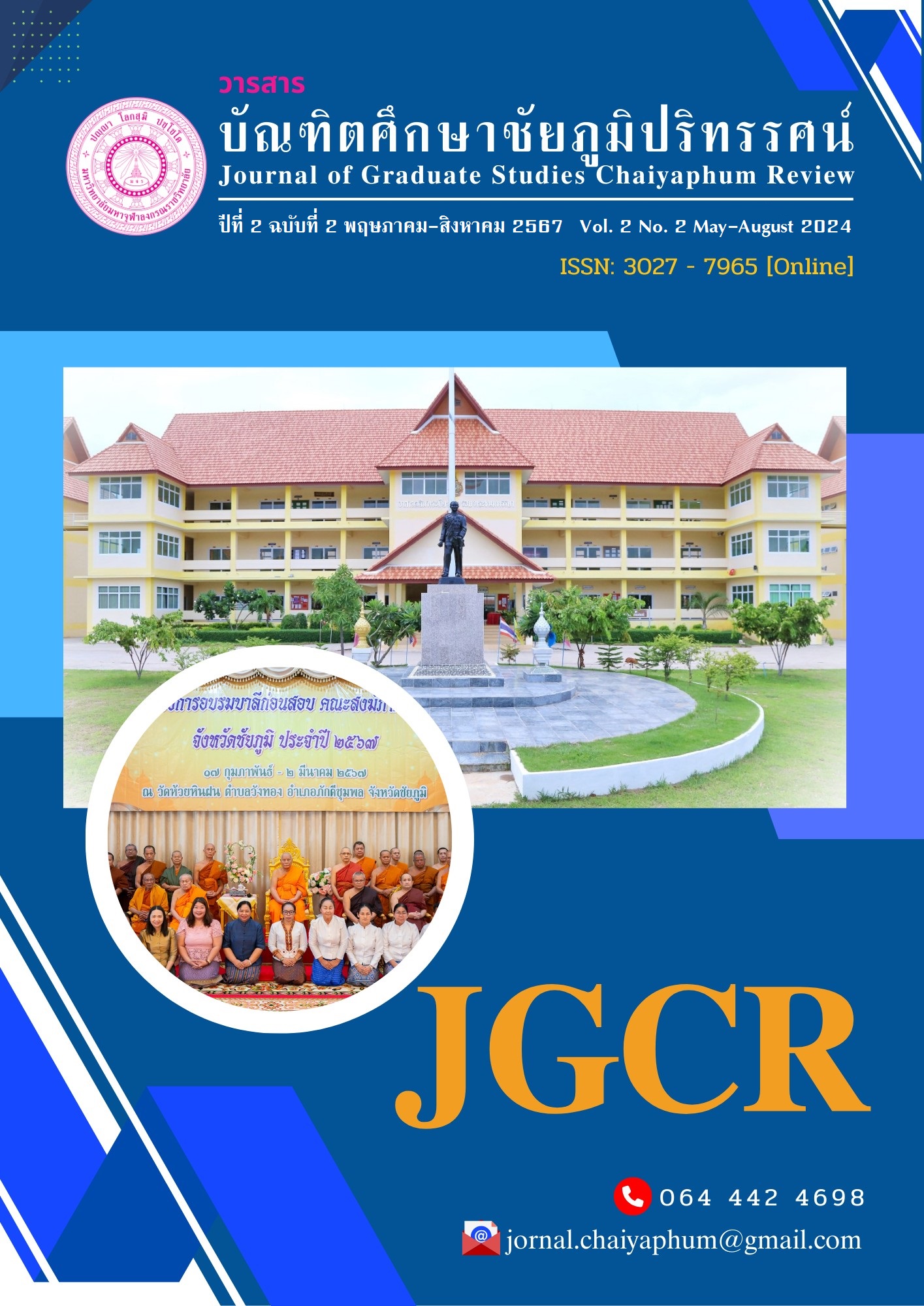Administrative Leadership of the Sangha AdminisdratorsNong Bua Daeng District, of Chaiyaphum Province
Keywords:
Leadership, Governance, SanghathikanAbstract
This research aims to 1. Study the level of administrative leadership of the Sangha chiefs 2. To compare the administrative leadership of the Sangha chiefs classified by personal factors 3. To present the administrative leadership of the Sangha chiefs by applying the principles of Sappurisadhamma. The research methodology is a mixed-method research. Qualitative research collected data from 9 key informants or people. By means of in-depth interviews and quantitative research, data were collected by means of questionnaires from a sample group of 358 monks in Nong Bua Daeng District. The tools used were questionnaires and interview forms. Data were analyzed by finding frequency, percentage, mean, standard deviation, hypothesis testing by testing t and F values, and data was analyzed by describing the.
The research results found that 1) the overall level of administrative leadership of the Sangha leaders in Nong Bua Daeng District, Chaiyaphum Province was at a moderate level (x̅=3.26) When classified by each aspect, the average values from highest to lowest were as follows: transformational leadership (x̅=4.38) situational leadership (x̅=4.15) leadership characteristics (x̅=4.07) and behavioral leadership (x̅=3.68) respectively, were at a high level. 2. The comparison results showed that those with different ages, years of monkhood, religious education, and status had different opinions. Therefore, the research hypothesis was rejected. Those with different worldly education had different opinions. Statistically significant at the 0.05 level, therefore accepting research hypothesis 3. The results of the presentation found that the characteristics of a leader must consist of good and desirable characteristics. Behavioral leadership: The leader is considered a role model or example that followers will follow. Situational leadership: The leader must have the wit and the aptitude to adjust the method of governance appropriately according to the situation. Changemaking leadership: A good leader must be a visionary, a person who can see a picture of the future that others cannot see.
References
คณาจารย์ มหาวิทยาลัยมหาจุฬาลงกรณ์ราชวิทยาลัย. (2551). การปกครองคณะสงฆ์ไทย. พิมพ์ครั้งที่ 1. กรุงเทพมหานคร : มหาจุฬาลงกรณราชวิทยาลัย.
ฉลอง พันธ์จันทร์ และคณะ. (2553). “การส่งเสริมศักยภาพของพระสงฆ์ในการพัฒนาชุมชนบ้านท่าขอนยาง อำเภอกันทรวิชัย จังหวัดมหาสารคาม”. วารสารมนุษยศาสตร์และสังคมศาสตร์มหาวิทยาลัยมหาสารคาม, ปีที่ 29 ฉบับที่ 1 (มิถุนายน-พฤศจิกายน).
พระครูใบฎีกาสุรพล อาสโภ, (2554). “การปกครองคณะสงฆ์ตามหลักพรหมวิหารธรรมของ
พระธรรมปริยัติเวที (สุเทพ ผสฺสธมฺโม)”. วิทยานิพนธ์พุทธศาสตรมหาบัณฑิต สาขาวิชาการจัดการเชิงพุทธ. บัณฑิตวิทยาลัย : มหาวิทยาลัยมหาจุฬาลงกรณราชวิทยาลัย.
พระครูสันติธรรมาภิรัต (บุญชัย สนฺติกโร). (2558). “การพัฒนารูปแบบการปกครองคณะสงฆ์ ในเขตปกครองคณะสงฆ์ ภาค 15”. วิทยานิพนธ์พุทธศาสตรดุษฎีบัณฑิต สาขาวิชาการจัดการเชิงพุทธ, บัณฑิตวิทยาลัย : มหาวิทยาลัยมหาจุฬาลงกรณราชวิทยาลัย.
พระครูไพศาลสุทธานุรักษ์ (จรณสมฺปนฺโน), (2555). “การปกครองคณะสงฆ์ โดยการประยุกต์ใช้หลักพรหมวิหาร 4 ของพระสังฆาธิการ อำเภอท่าหลวง จังหวัดลพบุรี”. วิทยานิพนธ์พุทธศาสตรมหาบัณฑิต สาขาวิชาการจัดการเชิงพุทธ. บัณฑิตวิทยาลัย : มหาวิทยาลัยมหาจุฬาลงกรณราชวิทยาลัย.
พระมหานรินทร์ สุรปญฺโญ (เอมพันธ์) (2564). “การประยุกต์หลักพุทธจริยธรรมเพื่อพัฒนาจริยธรรมทางการเมืองของผู้นำทางการเมืองในจังหวัดชัยภูมิ”. ปรัชญาดุษฎีบัณฑิต สาขาวิชารัฐศาสตร์. บัณฑิตวิทยาลัย : มหาวิทยาลัยมหาจุฬาลงกรณราชวิทยาลัย.
พระราชบัญญัติคณะสงฆ์ (2505). ราชกิจจานุเบกษา 39.
พระธรรมปิฎก (ป.อ.ปยุตฺโต). (2547). พจนานุกรมพุทธศาสน์ฉบับประมวลศัพท์. พิมพ์ครั้งที่ 12. กรุงเทพมหานคร : บริษัท เอส. อาร์. พริ้นติ้งแมสโปรดักส์ จำกัด.
Silverman. D. (2000). Doing Qualitative Research: A Practical Handbook. London: Sange.
Yamane. Taro. (1967). Statistics: An Introductory Analysis. New York: Harpen and Row.
Downloads
Published
How to Cite
Issue
Section
License
Copyright (c) 2024 Journal of Graduate Studies Chaiyaphum Review

This work is licensed under a Creative Commons Attribution-NonCommercial-NoDerivatives 4.0 International License.



